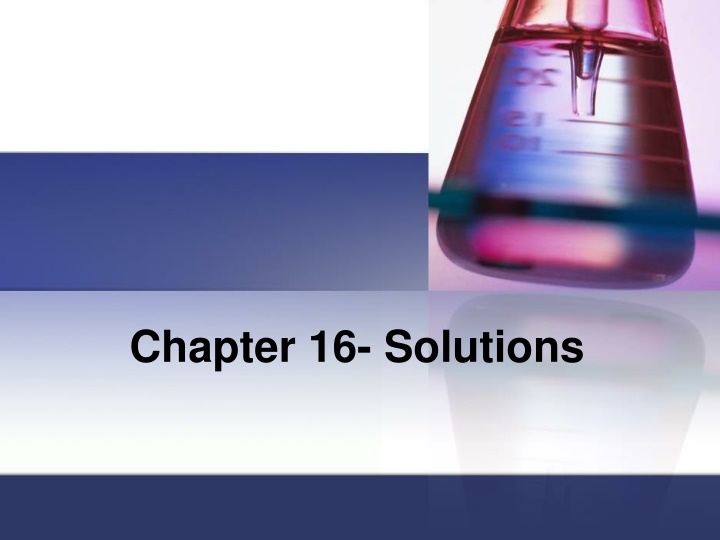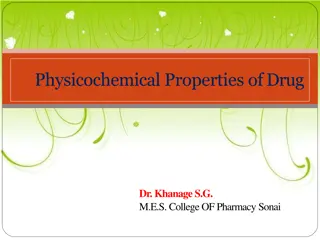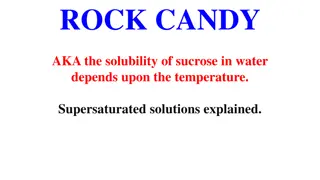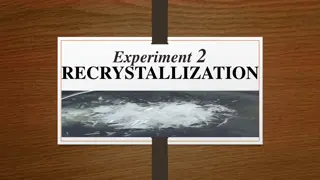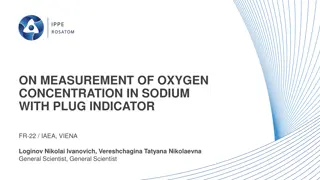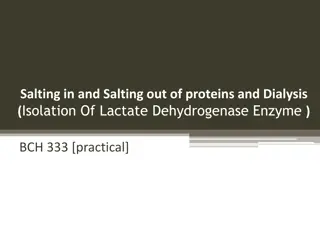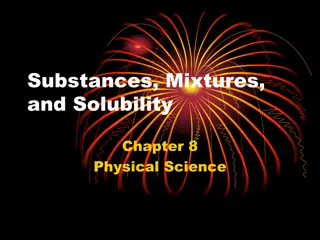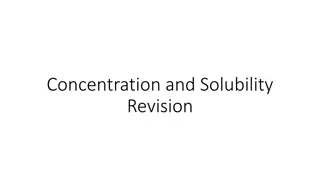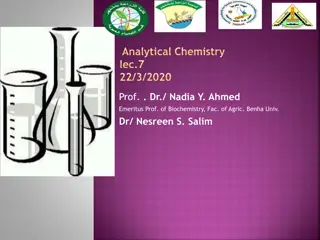Solutions and Solubility
Solutions are homogeneous mixtures of solute and solvent, influenced by factors like temperature and solubility. Discover the types of solutions, factors affecting solubility, and concentration in this detailed study.
Download Presentation

Please find below an Image/Link to download the presentation.
The content on the website is provided AS IS for your information and personal use only. It may not be sold, licensed, or shared on other websites without obtaining consent from the author.If you encounter any issues during the download, it is possible that the publisher has removed the file from their server.
You are allowed to download the files provided on this website for personal or commercial use, subject to the condition that they are used lawfully. All files are the property of their respective owners.
The content on the website is provided AS IS for your information and personal use only. It may not be sold, licensed, or shared on other websites without obtaining consent from the author.
E N D
Presentation Transcript
Solutions Homogeneous mixtures Can be solid, liquid, or gaseous Contains: Solute: dissolved particles in a solution Solvent: dissolving medium in a solution Solute + solvent = solution Ex: Sodium chloride dissolving in water NaCl = solute H2O= solvent
Dissolving The compositions of the solute and the solvent determine whether or not a substance will dissolve. Other factors determine how fast a substance dissolves.
Factors that influence time 1.) Agitation (stirring/shaking)- brings fresh solvent in contact with the surface of the solute. 2.) Temperature- with higher kinetic energy there will be an increase in the number of collisions. 3.) Particle size- smaller size will dissolve faster.
Solubility Amount of solute that dissolves in a given amount of a solvent at a given temperature and pressure Represents a saturated solution Normally expressed in grams of solute per 100 grams of solvent
Types of solutions 1.) Saturated- contains the maximum amount of solute for a given amount of solvent at a constant temperature. 2.) Unsaturated- contains less solute than a saturated solution at a given temperature. 3.) Supersaturated- contains more solute than it can theoretically hold at a given temperature. (very unstable)
Solubility Curve What happens to the solubility of KNO3 as temperature increases? What is the solubility of KBr at 80 degrees Celsius?
Factors that Affect Solubility 1.) Temperature Solubility of most ionic compounds increase as temperature increases Solubility of gases decrease as temperature increases 2.) Pressure (only applies to gases) Henry s law- at a given temperature, the solubility of a gas is directly proportional to the pressure of the gas above the liquid. (As P , S )
Concentration A measure of the amount of solute that is dissolved in a given quantity of solution. Concentrated vs. Dilute Relative terms Concentrated contains large amts. of solute Dilute contains small amts. of solute
Molarity (M) Note: the symbol is a capital M Ex: 12M HCl- 12 molar HCl (concentrated) vs. 0.1 M HCl- 0.1 molar HCl (diluted) Molarity = moles of solute Liters of solution
Example #1 What is the molarity of a 500 mL solution containing 3.0 mol of NaCl?
Example #2 Calculate the molarity of a 2.4 L solution containing 50.5 g of CaCl2.
Example #3 How many moles of KBr are there in a 0.25 M solution with a volume of 600 mL?
Example #4 How many grams of HCl are in a 735 mL solution that has a concentration of 1.0 M?
Dilutions Add more solvent without the addition of more solute M1V1= M2V2 1 refers to the situation before dilution and 2 refers to the situation after dilution
Example #1 A stock solution of 1.00 M NaCl is available. How many milliliters are needed to make 100.0 mL of 0.750 M solution?
Example #2 Concentrated HCl is 12.0 M. What volume is needed to make 2.00 L of 1.00 M solution?
Example #3 A stock solution of 10.0 M NaOH is prepared. From this solution, you need to make 250.0 mL of 0.375 M solution. How many mL will be required?
